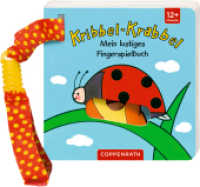- ホーム
- > 洋書
- > 英文書
- > Nature / Ecology
Full Description
A stunning look at Earth's wildlife and natural history, including rocks, minerals, animals, plants, fungi and more! Arranged by climatic conditions and habitats, Natural History of the World offers a broad overview of the most important animals and vegetation in each region. These areas help us understand the ranges of plants and animals, including identifying species that may be under threat from habitat loss. Climate zones can even help farmers and gardeners understand which plants will grow best in their area. From the arid, desolate Sahara, the largest hot desert in the world where temperatures can exceed 40oC (100oF), to Macapá in Brazil where the tropical monsoon climate means over six months of rain from December to July every year, marvel at the beauty and variety that exists on our planet and has done so for millions of years. Striking imagery is accompanied with easy-to-read, accessible information, making it a riveting, essential history. Natural History of the World is an explorative, pictorial guide to every environment on the planet and how nature has evolved to live there, ranging from the Mesozoic Era to the present day.
Contents
Introduction
Tropical forest
Savannah
Desert
Prairie and steppe
Temperate forest
The taiga
Frozen lands
Mountains
Saltwater
Freshwater
Glossary
Index








